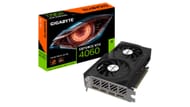The RTX 5060 is supposed to be the next mainstream 1080p gaming GPU from Nvidia. The card will replace the 4060, with extra rasterization and rendering performance for even better framerates in the latest games. Historically, the 60-class lineup has been the most commercially successful for Team Green, thanks to its balance of gaming capabilities and competitive pricing.
However, Nvidia has been quite conservative when it comes to the video memory paired with its GPUs. While 8 GB has become the bare minimum for the last couple of generations, the industry standard has already moved ahead of the number, pushing for 10-12 GB of usage in more demanding titles. This raises the question: how much video memory should the upcoming budget card bundle?
Two of the most sensible options Nvidia has to choose for the RTX 5060 are 8 and 12 GB. We firmly believe pairing the card with 12 GB of VRAM would be the best bet.
Note: Parts of this article are subjective and reflect the opinions of the writer
How could extra VRAM on the RTX 5060 affect gaming performance?

VRAM issues are one of the most hotly debated topics these days. Nvidia's competitors, namely AMD and Intel, have bundled their GPUs with generous amounts of memory to stay one step ahead of the Santa Clara-based giant. A prime example is the new Arc B580, which offers 12 GB of memory at just $249.
However, the 60-class segment is a very interesting case study. Let's brush up on what Team Green has to offer in this generation: the RTX 4060 8 GB, the 4060 Ti 8 GB, and the 4060 Ti 16 GB.
The 8 GB VRAM buffer on the $299 and $399 offerings have been widely criticized, especially because they limit framerates in more demanding games and higher resolutions like 1440p.
However, it's not like Nvidia hasn't addressed these issues before. The RTX 3060 12 GB was launched in 2021 to deal with this exact problem. However, with the Lovelace generation, the company decided to sacrifice gaming memory to favor a lower price tag.
How would video memory impact performance on the RTX 5060? While it isn't possible to make accurate predictions, given GPUs have a lot of differences other than video memory configs, the two 4060 Ti variants give us a fine avenue to test a few hypotheses.

Below is a look at framerates achieved by either card in some of the latest and most demanding games at 1440p and 4K resolutions. We sourced these numbers from the YouTube channel Dracarys Gaming. This could give us an idea of how VRAM on the RTX 5060 could scale framerates.
Upon looking at the performance differences, we find that there are very few gains in framerates at QHD resolutions. However, 4K gaming results in 30-60% better framerates with the extra video memory. This is particularly interesting, given the two cards have the exact same graphics chip, core counts, and operating clock speeds.
If Nvidia is targeting better high-resolution performance with the RTX 5060, it could make perfect sense to pair it with extra VRAM.
While these numbers prove that extra video memory only helps at 4K resolutions, and even 1440p doesn't benefit from a larger VRAM buffer, we don't think it's wise to stick to 8 GB for 2025 and beyond. This is due to a mix of factors.
For starters, video games are getting more demanding by the day. Upping the video memory on the RTX 5060 will help future-proof the GPU. Secondly, the competition is already pushing for extra video memory. These days, VRAM configurations have become more of a marketing term than a major performance delimiter. Staying conservative could hurt the Nvidia card's sales.
This is why pairing the RTX 5060 with 12 GB of VRAM would be the best bet for Nvidia. The GPU probably won't be introduced at CES in January, and we are likely looking at a mid-2025 launch. In such a market, the extra video memory would help the card be more marketable and future-proof.
